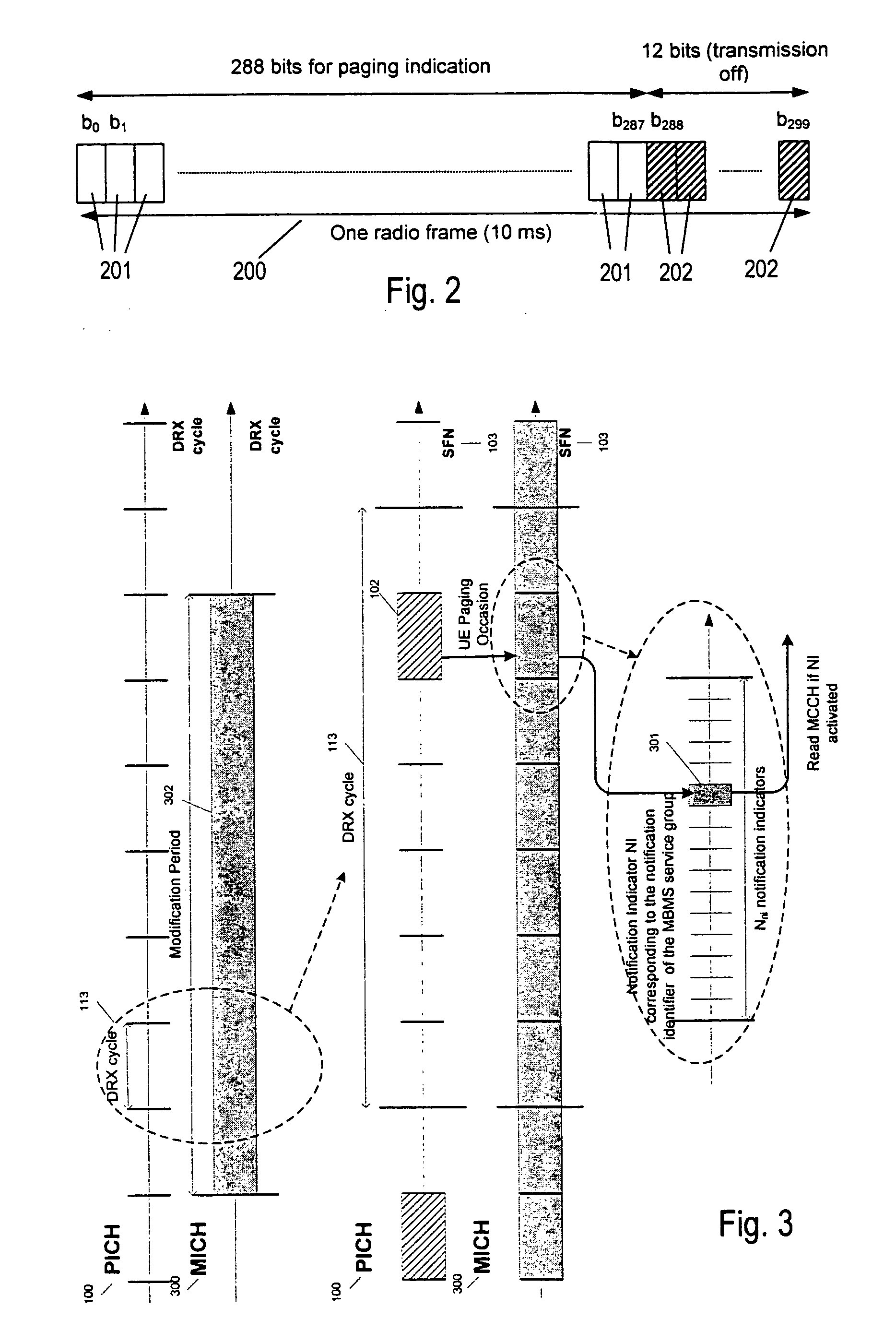Cyclic transmission of notification coordinates in a communication system
- Summary
- Abstract
- Description
- Claims
- Application Information
AI Technical Summary
Benefits of technology
Problems solved by technology
Method used
Image
Examples
Embodiment Construction
[0054] The illustrative embodiments of the present invention will be described with reference to the figure drawings, wherein like elements and structures are indicated by like reference numbers.
[0055] The present invention presents a new method for a multi-frame notification messaging based on cyclic transmission of notification coordinates. This method will be called herein below the “cyclic notification sequence method”.
[0056] Although the method according to the present invention can be applied to various wired and wireless networks requiring notification and having a framed data structure, it will explained below without loss of generality for the example of MBMS notification in UMTS, like defined by the 3GPP. Other applications are conceivable with wired local area networks or wireless networks of other standards. For example, notifications could be used to wake up devices of a wired local area network.
[0057] Referring now to FIG. 6, a space 600 is considered containing not...
PUM
 Login to View More
Login to View More Abstract
Description
Claims
Application Information
 Login to View More
Login to View More - R&D
- Intellectual Property
- Life Sciences
- Materials
- Tech Scout
- Unparalleled Data Quality
- Higher Quality Content
- 60% Fewer Hallucinations
Browse by: Latest US Patents, China's latest patents, Technical Efficacy Thesaurus, Application Domain, Technology Topic, Popular Technical Reports.
© 2025 PatSnap. All rights reserved.Legal|Privacy policy|Modern Slavery Act Transparency Statement|Sitemap|About US| Contact US: help@patsnap.com



